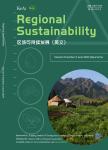Any alternatives to rice? Ethnobotanical insights into the dietary use of edible plants by the Higaonon tribe in Bukidnon Province, the Philippines
Any alternatives to rice? Ethnobotanical insights into the dietary use of edible plants by the Higaonon tribe in Bukidnon Province, the Philippines作者机构:Department of BiologyCentral Mindanao UniversityUniversity TownMaramag8714the Philippines School of Natural SciencesBangor UniversityBangorLL572DGUnited Kingdom
出 版 物:《Regional Sustainability》 (区域可持续发展(英文))
年 卷 期:2022年第3卷第2期
页 面:95-109页
学科分类:12[管理学] 0202[经济学-应用经济学] 02[经济学] 0830[工学-环境科学与工程(可授工学、理学、农学学位)] 1203[管理学-农林经济管理] 0907[农学-林学] 020205[经济学-产业经济学] 090705[农学-野生动植物保护与利用] 09[农学]
基 金:funded by the CHED-Newton Ph.D.Scholarship Fund(261833443)through the British Council and the Commission on Higher Education(CHED) the Philippines
主 题:Sustainable Development Goals(SDGs) Food security Neglected and underutilized species Indigenous peoples Ethnobotany Nutrition The Philippines
摘 要:Though considered an agricultural country,the Philippines is the world’s largest importer of *** persistent problem of insufficient rice supply,however,has been exacerbated by economic crises and natural ***,for the Higaonon tribe in Bukidnon Province,the Philippines,the rich agrobiodiversity and wild edible plants are vital for food security and resilience since the mountainous terrain in this province presents a challenge for rice *** gain insight from the indigenous edible plant knowledge of the Higaonon tribe,we conducted an ethnobotanical research to document the diversity,utilization,and biocultural refugia of both cultivated and wild edible plants.A total of 76 edible plant species belonging to 62 genera and 36 botanical families were *** most represented botanical families included the Fabaceae,Solanaceae,and *** terms of dietary usage,3 species were categorized as cereals;8 species were white roots,tubers,and plantains;3 species were vitamin A-rich vegetables and tubers;16 species were green leafy vegetables;12 species were categorized as other vegetables;2 species were vitamin A-rich fruits;27 species were classified as other fruits;7 species were legumes,nuts,and seeds;and 8 species were used as spices,condiments,and *** the statistical software R with ethnobotanyR package,we further calculated the ethnobotanical indices(use-report(UR),use-value(UV),number of use(NU),and fidelity level(FL))from 1254 URs in all 9 food *** species with the highest UV and UR were from a variety of nutrient-rich edible plants such as Ipomoea batatas(L.)Lam.,Musa species,Colocasia esculenta(L.)Schott,Zea mays L.,and Manihot esculenta *** extensive utilization of root and tuber crops along with corn and plantain that contain a higher amount of energy and protein,carbohydrates,minerals,and vitamins were shown to be an important nutrient-rich alternatives to *** males appeared to be more



